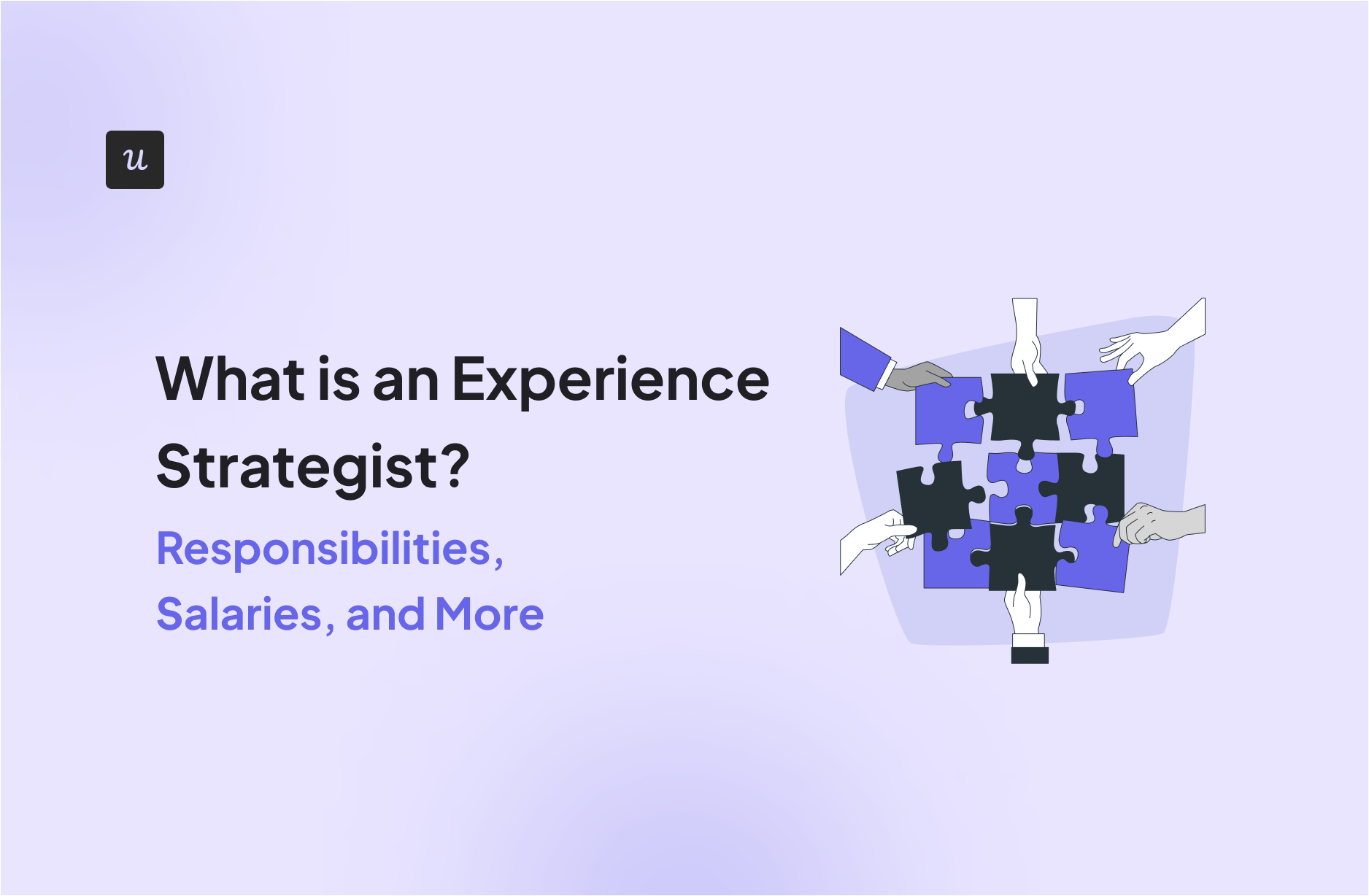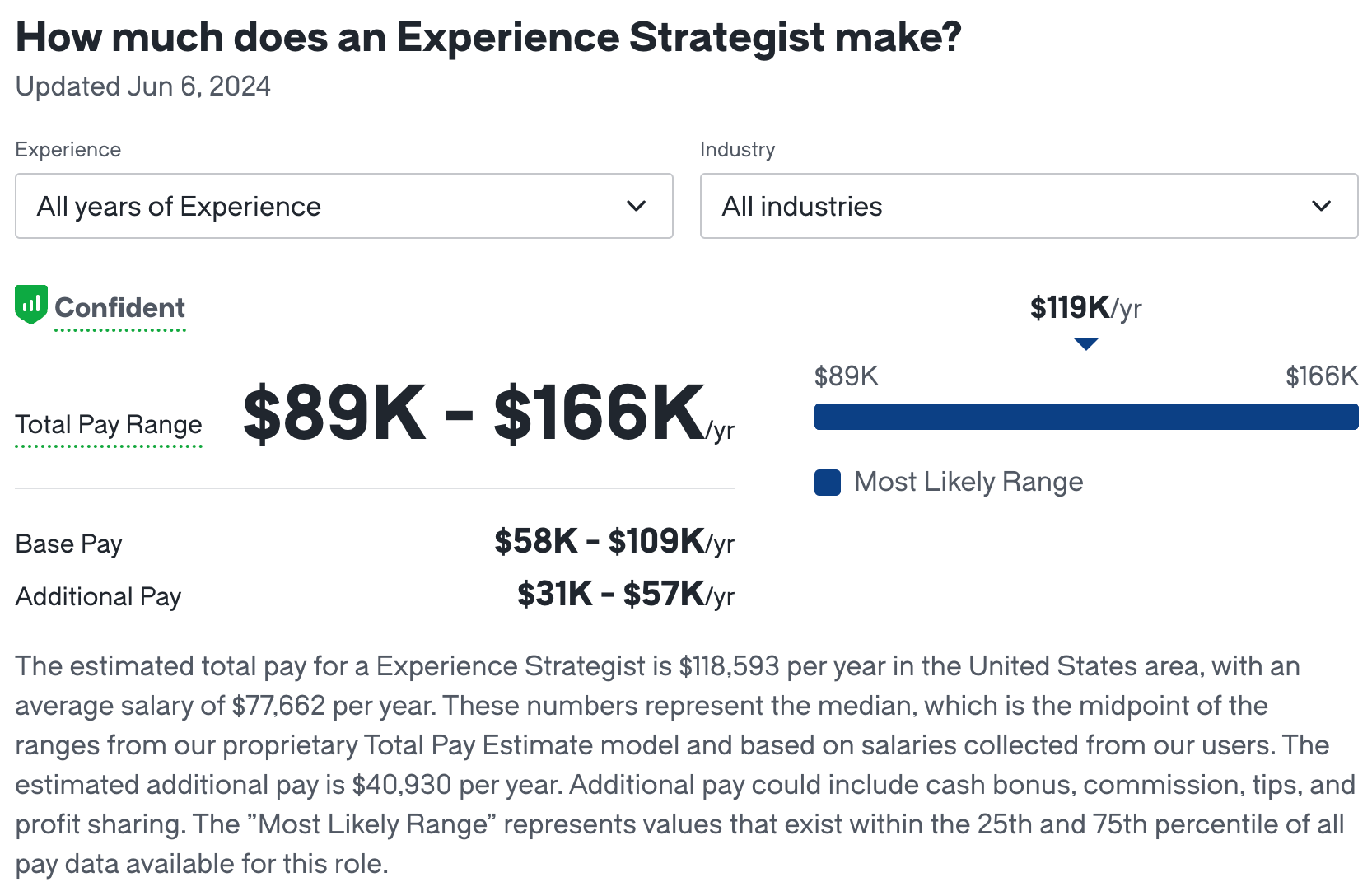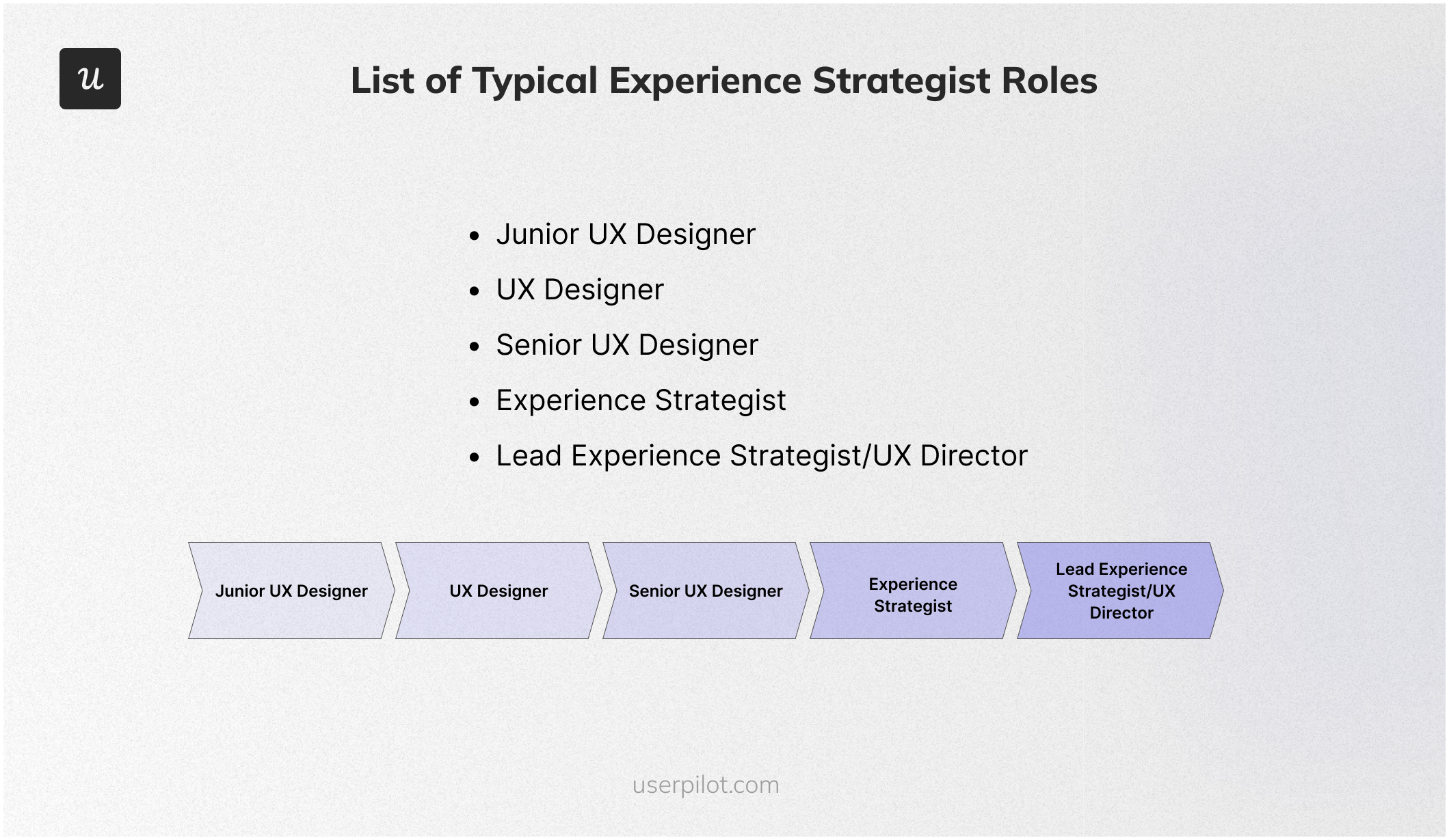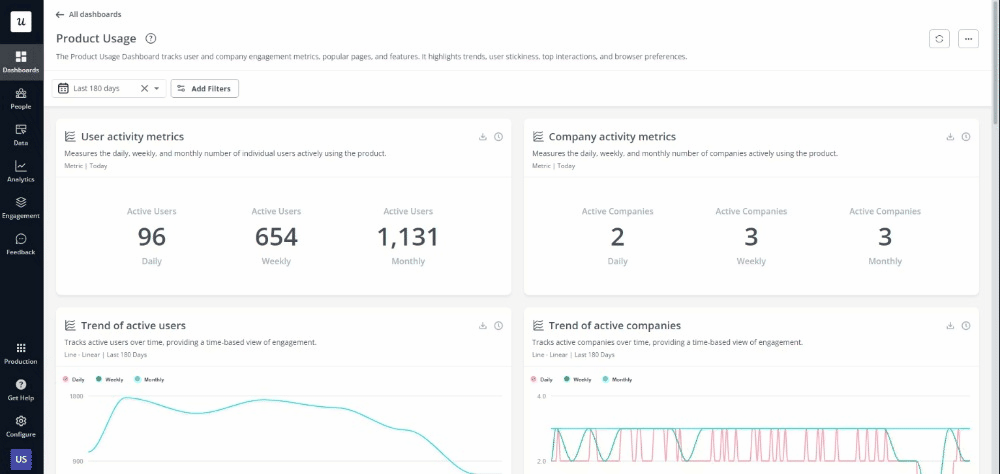
Try Userpilot Now
See Why 1,000+ Teams Choose Userpilot

What is an experience strategist?
An experience strategist designs and optimizes user experiences across different touchpoints to enhance customer satisfaction and engagement. They combine insights from user research, data analytics, and design thinking to create cohesive and compelling experiences that align with business goals.
What does an experience strategist do?
An experience strategist develops and implements strategies to improve customer journeys, ensuring that every interaction with a company is positive and memorable. They collaborate with various teams to align business objectives with user needs, leveraging research and analytics to inform their decisions.
Experience strategist’s main responsibilities
An experience strategist plays a crucial role in designing and optimizing user experiences to enhance customer satisfaction and engagement. Their responsibilities encompass a variety of tasks aimed at improving user interactions and ensuring a seamless experience across all touchpoints.
- Conduct user research: Gather insights into user needs, behaviors, and pain points through interviews, surveys, and usability testing to inform design decisions.
- Develop user personas: Create detailed user personas based on research to better understand target audiences and tailor experiences to meet their needs.
- Create user journey maps: Visualize the user journey across different touchpoints to identify areas for improvement and ensure a cohesive experience.
- Collaborate with cross-functional teams: Work closely with design, product, marketing, and engineering teams to align strategies and ensure a unified approach to user experience.
- Design wireframes and prototypes: Develop wireframes and interactive prototypes to test and iterate on design concepts before implementation.
- Optimize onboarding processes: Design and refine user onboarding experiences to ensure new users can easily understand and adopt the product.
- Analyze user data: Use data analytics tools to track user behavior and measure the effectiveness of implemented strategies, making data-driven decisions.
- Stay updated with industry trends: Continuously educate yourself on the latest trends, tools, and best practices in UX and experience strategy.
- Conduct A/B testing: Perform A/B tests to compare different design elements and identify the most effective solutions for enhancing user experience.
- Present findings and recommendations: Communicate insights and strategic recommendations to stakeholders, ensuring alignment and buy-in for proposed changes.
Experience strategist salary
The estimated total pay for an Experience Strategist is approximately $118,593 per year in the United States, with an average base salary of $77,662 per year and additional pay of about $40,930 per year.

One of the biggest factors influencing your salary as an experience strategist is your experience level. Here’s how experience can impact your salary, according to Glassdoor:
- 0 to 1 years: $64K – $118K per year
- 1 to 3 years: $72K – $132K per year
- 4 to 6 years: $84K – $156K per year
- 7 to 9 years: $96K – $180K per year
- 10 to 14 years: $117K – $219K per year
- 15+ years: $144K – $269K per year
Industries where the demand for experience strategists is highest tend to be the same industries that pay the most on average. Here are the salaries, as reported by Glassdoor:
- Aerospace & Defense: $114K – $196K per year
- Pharmaceutical & Biotechnology: $115K – $210K per year
- Management & Consulting: $95K – $174K per year
- Information Technology: $127K – $237K per year
- Healthcare: $96K – $179K per year
Experience strategist career path
An experience strategist’s career path typically involves a progression through various roles, each with increasing responsibility and complexity. Here are five key positions along this career path:

- Junior UX Designer: Entry-level role focused on creating user interfaces and experiences. Responsibilities include assisting with user research, wireframing, prototyping, and collaborating with senior designers to implement feedback.
- UX Designer: Mid-level position responsible for conducting user research, developing user personas, creating detailed wireframes and prototypes, and collaborating with cross-functional teams to design and improve user experiences.
- Senior UX Designer: Advanced role with a focus on leading design projects, mentoring junior designers, conducting complex user research, and developing comprehensive user experience strategies. Responsible for ensuring design consistency and quality across projects.
- Experience Strategist: Role focused on developing and implementing strategies to enhance overall user experiences across all touchpoints. Responsibilities include conducting extensive user research, creating journey maps, and collaborating with various departments.
- Lead Experience Strategist/UX Director: Senior leadership position overseeing the entire UX strategy and team. Responsibilities include defining the user experience vision, leading large-scale projects, managing a team of designers and strategists, and ensuring that all user experience efforts align with the company’s strategic goals.
Best practices for being a great experience strategist
To excel as an experience strategist, follow these best practices to ensure user-centric and impactful strategies:
- Conduct thorough user research: Invest time in understanding your users’ needs, behaviors, and pain points through various research methods such as interviews, surveys, and usability testing. This foundational knowledge ensures that your strategies are user-centric.
- Embrace data-driven decision-making: Utilize data analytics to inform your strategies and measure their effectiveness. By basing decisions on solid data, you can create more targeted and impactful user experiences.
- Collaborate across teams: Work closely with cross-functional teams, including design, development, marketing, and product management. Effective collaboration ensures that all aspects of the user experience are aligned and cohesive.
- Stay updated with industry trends: Continuously educate yourself on the latest trends, tools, and best practices in UX and experience strategy. This knowledge helps you stay competitive and innovative in your approach.
- Create and maintain user journey maps: Develop detailed journey maps to visualize and understand the user’s experience across different touchpoints. Regularly update these maps to reflect changes and improvements, ensuring a seamless and consistent user experience.
Experience strategist FAQs
- What is the role of an experience strategist? An experience strategist designs and optimizes user experiences across different touchpoints to enhance customer satisfaction and engagement.
- What is an experience strategy? An experience strategy is a plan that aligns business goals with user needs, using research and data to create cohesive and compelling user experiences.
- What is a user experience strategist? A user experience strategist focuses on creating and improving user interactions with a product or service, ensuring a seamless and satisfying experience for users.
- What is the work of a strategist? The work of a strategist involves researching, planning, and implementing strategies to achieve specific goals, often by analyzing data and collaborating with various teams to ensure alignment and effectiveness.
Conclusion
We hope this guide has provided you with valuable insights into the roles, responsibilities, and rewards associated with this role.
Looking into tools for experience strategists? Userpilot is an all-in-one product platform with engagement features and powerful analytics capabilities. Book a demo to see it in action!








